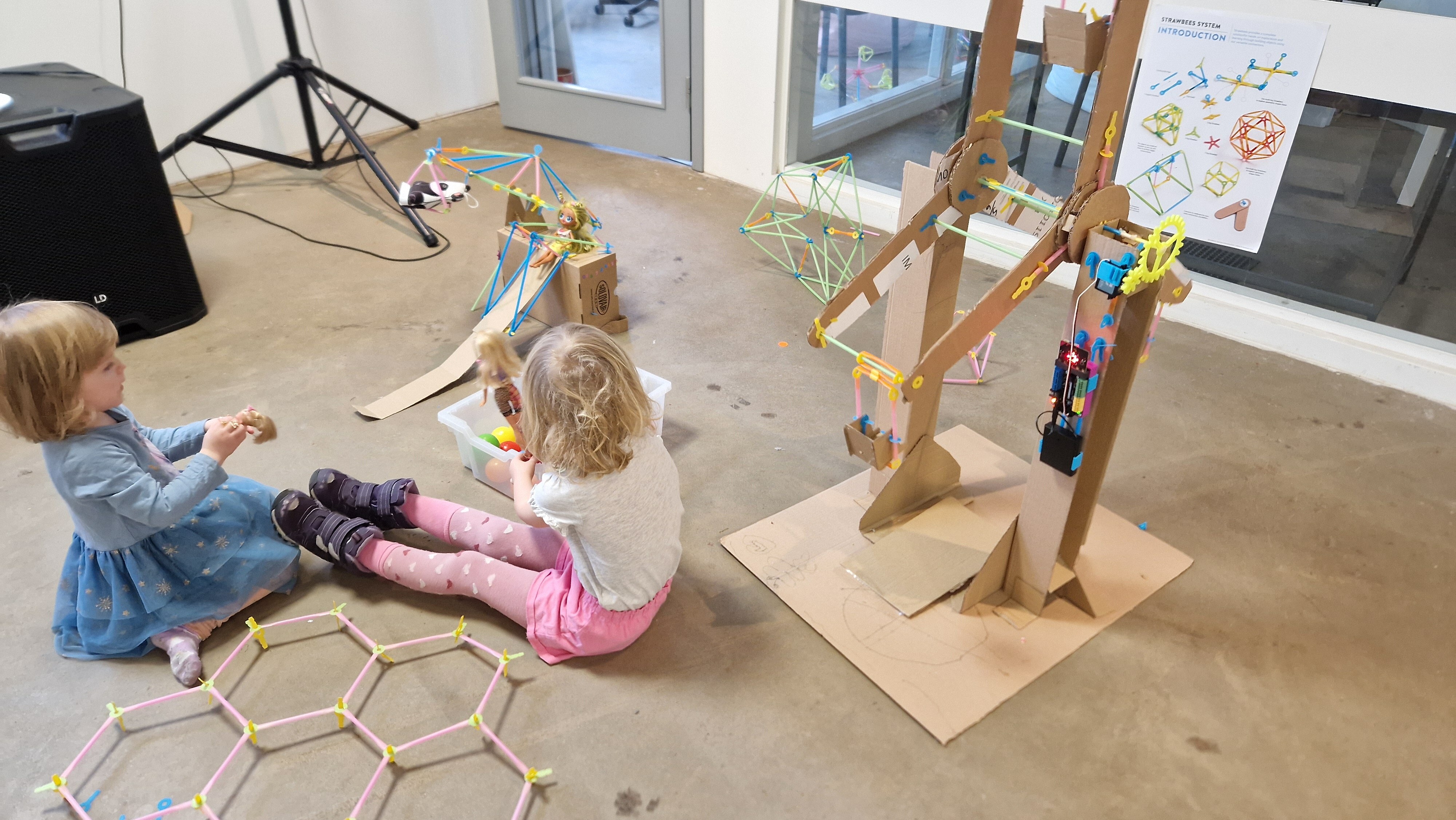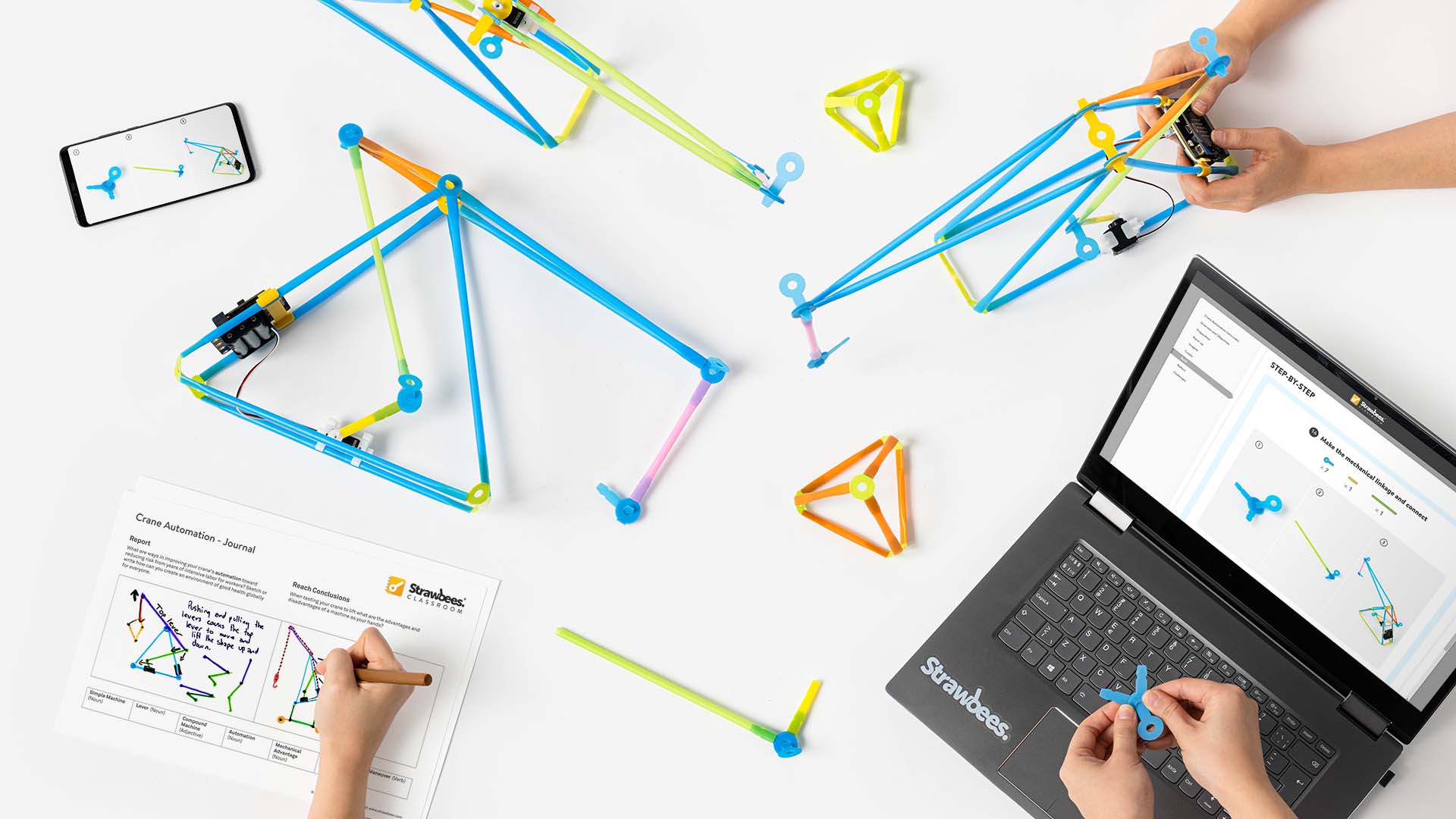The Power of Inclusive STEAM Education
Fostering an inclusive and innovative environment is key to unlocking the full potential of students and in this evergreen webinar, "Inclusive Innovation with BirdBrain Technologies" we explored practical approaches to making STEAM education accessible, engaging, and impactful for all learners. Led by Sarah FitzHenry, Director of Education & Mission at BirdBrain Technologies, and Erik Torstensson Boji, the creative mind behind Strawbees, this session offers invaluable insights into integrating hands-on learning with cutting-edge educational technology.
The Power of Inclusive STEAM Education
Inclusive STEAM education is about more than just teaching students the basics of these subjects—it's about ensuring that every student, regardless of their background, abilities, or prior knowledge, can engage with and succeed in STEAM disciplines. This approach recognizes that students bring diverse experiences and perspectives into the classroom and that these differences should be celebrated and harnessed to enrich the learning experience for everyone.
Sarah FitzHenry, Director of Education & Mission at BirdBrain Technologies, spoke passionately about this during the webinar, emphasizing that "everything we do is driven by our mission to inspire deep and joyful hands-on learning in all students". For BirdBrain Technologies, the goal is not just to teach, but to inspire—ensuring that students find joy in learning, no matter their starting point. This approach is particularly crucial in STEAM, where students might feel intimidated by subjects like robotics, engineering, or computer science.
Inclusive education also involves creating an environment where students can see themselves represented in the material they are learning. This could mean integrating culturally relevant examples, providing multiple means of engagement, or designing activities that allow students to leverage their unique strengths. Sarah highlighted the importance of reaching every student, not just those who might naturally excel in these areas: "We don’t want to just reach the students that are interested in computer science naturally…we want to reach every single student". This commitment to inclusivity ensures that all students, regardless of their prior interest or experience, have the opportunity to succeed and find joy in STEAM education.
Harnessing Technology for Engagement
One of the most powerful tools for engaging students in STEAM education is technology. When used effectively, technology can transform abstract concepts into tangible, interactive experiences that captivate students' imaginations and foster a deeper understanding of the material. Erik Torstensson Boji, the creator behind Strawbees, highlighted this during the webinar, showcasing how Strawbees kits allow students to explore engineering and robotics in a hands-on, creative way.
"Strawbees were designed to be a fast prototyping system to build knowledge and communicate ideas", Erik explained. This emphasis on rapid prototyping is crucial in the classroom, where students benefit from being able to test and iterate on their ideas quickly. By building their own robotic structures using Strawbees, students are not just learning about engineering principles—they are actively applying them in real-time, which reinforces their understanding and keeps them engaged.
Moreover, the flexibility of the Strawbees system means that students can start with simple projects and gradually build up to more complex ones as their confidence and skills grow. This aligns with the educational concept of "low floor, high ceiling," which means that while the entry point for using the technology is accessible for beginners, the potential for complexity and depth is vast. As Erik put it, "Prototypes can be robots, but the most important thing here is that it serves as a model for inspiration". This approach encourages students to think creatively and explore the full potential of their ideas, knowing that there are no limits to what they can create.
In addition to enhancing engagement, technology also plays a critical role in making STEAM education more inclusive. Tools like the Hummingbird Robotics Kit and the Strawbees Robotic Inventions Kit, which were showcased in the webinar, are designed to be flexible and adaptable, allowing students to work with a wide range of materials and devices. This adaptability ensures that students with different learning styles and abilities can all participate meaningfully in STEAM activities. For example, the Strawbees kit has the ability to integrate with micro:bit, using block-based coding for beginners through to advanced student learning, which means that it can be used across a broad spectrum of educational levels and contexts.
Practical Strategies for Educators
The webinar provided numerous practical strategies for educators looking to integrate inclusive STEAM practices into their classrooms. One of the key strategies discussed was the importance of aligning classroom activities with educational standards. This ensures that while students are engaged in creative and hands-on learning, they are also meeting the necessary academic requirements. Sarah emphasized this saying, "We’ve broken our projects into six main categories... but don’t let these limit you". This flexibility allows educators to adapt lessons to meet their specific classroom needs while still adhering to important educational benchmarks.
Another critical strategy is to use project-based learning as a vehicle for STEAM education. Project-based learning (PBL) allows students to work on extended projects that require them to apply multiple skills and knowledge areas to solve a problem or create something new. This approach not only makes learning more engaging but also helps students develop critical thinking, collaboration, and problem-solving skills. Sarah and Erik discussed how Strawbees and the Hummingbird Robotics Kit can be used in PBL settings to encourage students to explore and innovate. For example, they shared a project where students were challenged to design and build a robot that could sense, think, and act—a task that required them to integrate knowledge from science, technology, engineering, and mathematics.
Erik also highlighted the importance of allowing students to learn through trial and error. "It doesn't have to work 100%... it's a way of showing what their idea is and understanding the problem through prototyping". This iterative process is a cornerstone of both engineering and design thinking, where students are encouraged to test their ideas, learn from failures, and continuously improve their designs. By fostering a classroom environment where mistakes are viewed as opportunities for learning rather than failures, educators can help students build resilience and confidence in their abilities.
Furthermore, the webinar emphasizes the value of providing students with opportunities to showcase their work. Whether through presentations, exhibitions, or digital portfolios, giving students a platform to share their creations not only boosts their confidence but reinforces their learning. It allows them to receive feedback, reflect on their work, and see how their peers approached similar challenges. Sarah mentioned the importance of setting clear expectations and success criteria for students: "What does success look like for your students? You know your group, you know your limitations". By clearly defining these parameters, educators can help students stay focused and motivated while also ensuring that the learning objectives are met.
Building a STEAM Community
A recurring theme in the webinar was the importance of building a strong, supportive STEAM community. STEAM education thrives when there is collaboration not just within the classroom, but also across the broader educational ecosystem. Both Sarah and Erik stressed the value of connecting educators, students, and industry professionals to create a rich learning environment where ideas and innovations can be shared and developed collaboratively.
"Collaboration is key," Erik noted, "because in the future if they're ever going to develop something, you work with so many different systems that you need to figure out how to put them together". This reflects the real-world nature of STEAM careers, where interdisciplinary collaboration is often essential for success. By encouraging students to work together on projects, educators can help them develop the teamwork and communication skills that are crucial in today's interconnected world.
Moreover, building a STEAM community extends beyond the classroom. The webinar highlighted the importance of creating connections with local organizations, businesses, and other schools. These partnerships can provide students with additional resources, real-world experience, and inspiration for their projects. For example, inviting local engineers, artists, or scientists to speak to students or mentor them on projects can help students see the relevance of what they are learning and how it applies to real-world challenges.
The role of online communities in supporting STEAM education was also emphasized. Sarah mentioned resources like the BirdBrain Technologies Educators Group on Facebook, where teachers from around the world share ideas, ask questions, and support each other in implementing STEAM in their classrooms. Such online communities can be invaluable for educators who might feel isolated or who are looking for new ideas and inspiration.
Building a STEAM community also involves fostering a sense of belonging and inclusivity within the classroom. Sarah spoke about the importance of making sure every student feels valued and included: "We want to reach every single student... and the best way to do that is to reach every single amazing teacher out there". By creating a classroom culture where diversity is celebrated, and every student’s voice is heard, educators can help all students feel like they are a part of the STEAM community.
Our "Inclusive Innovation with BirdBrain Technologies" webinar showcased the transformative power of hands-on, inclusive STEAM education. By leveraging tools like Strawbees and BirdBrain’s Robotics Kits, educators can create vibrant, engaging learning environments that inspire all students to explore and innovate. Whether you’re a seasoned STEAM educator or just beginning your journey, these insights offer valuable guidance for making your classroom a hub of creativity and discovery.
You May Also Like
These Related Stories

A Strawbees Webinar: Inclusive Innovation with BirdBrain

Strawbees Webinar 101 - May 2025


